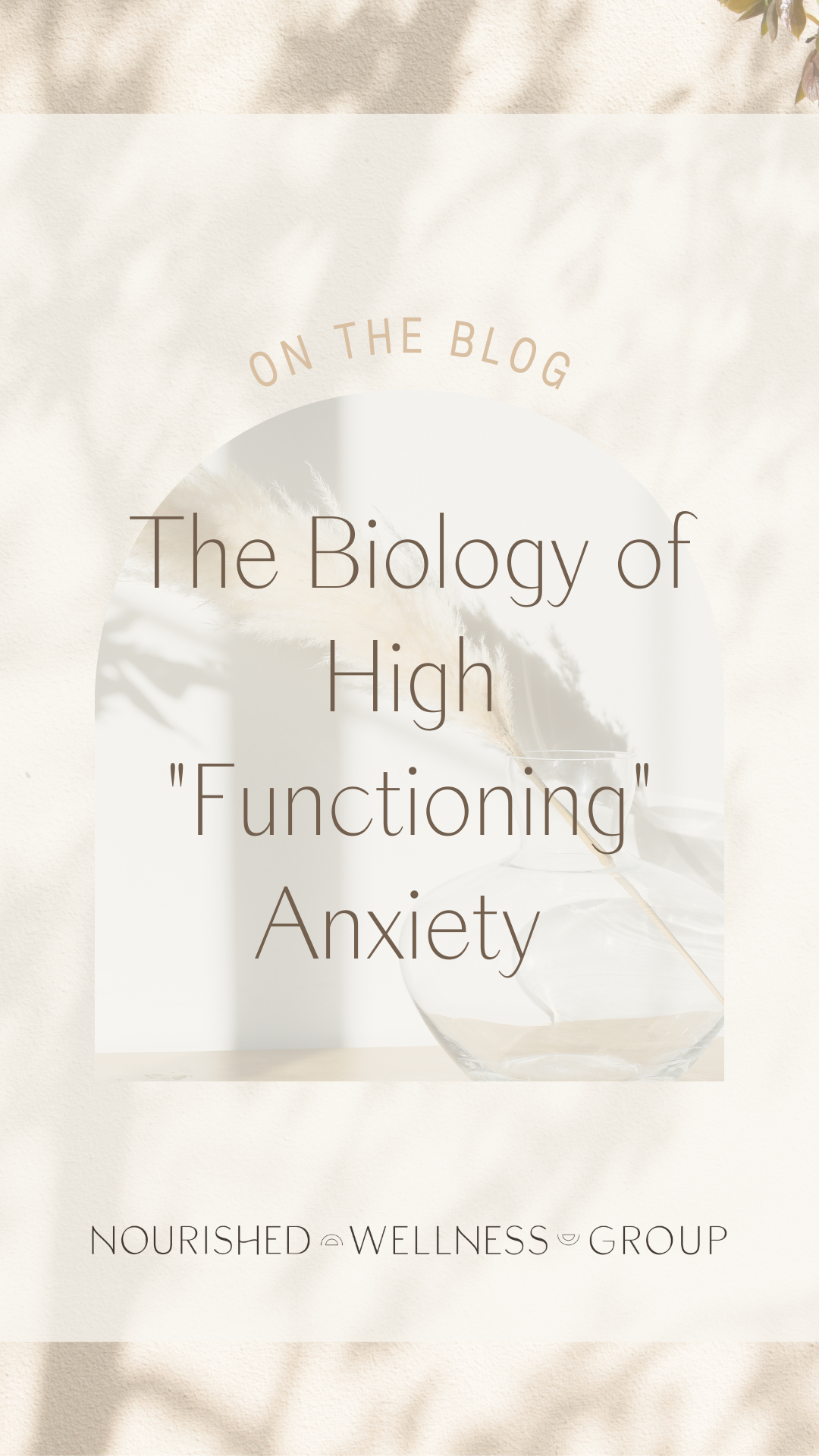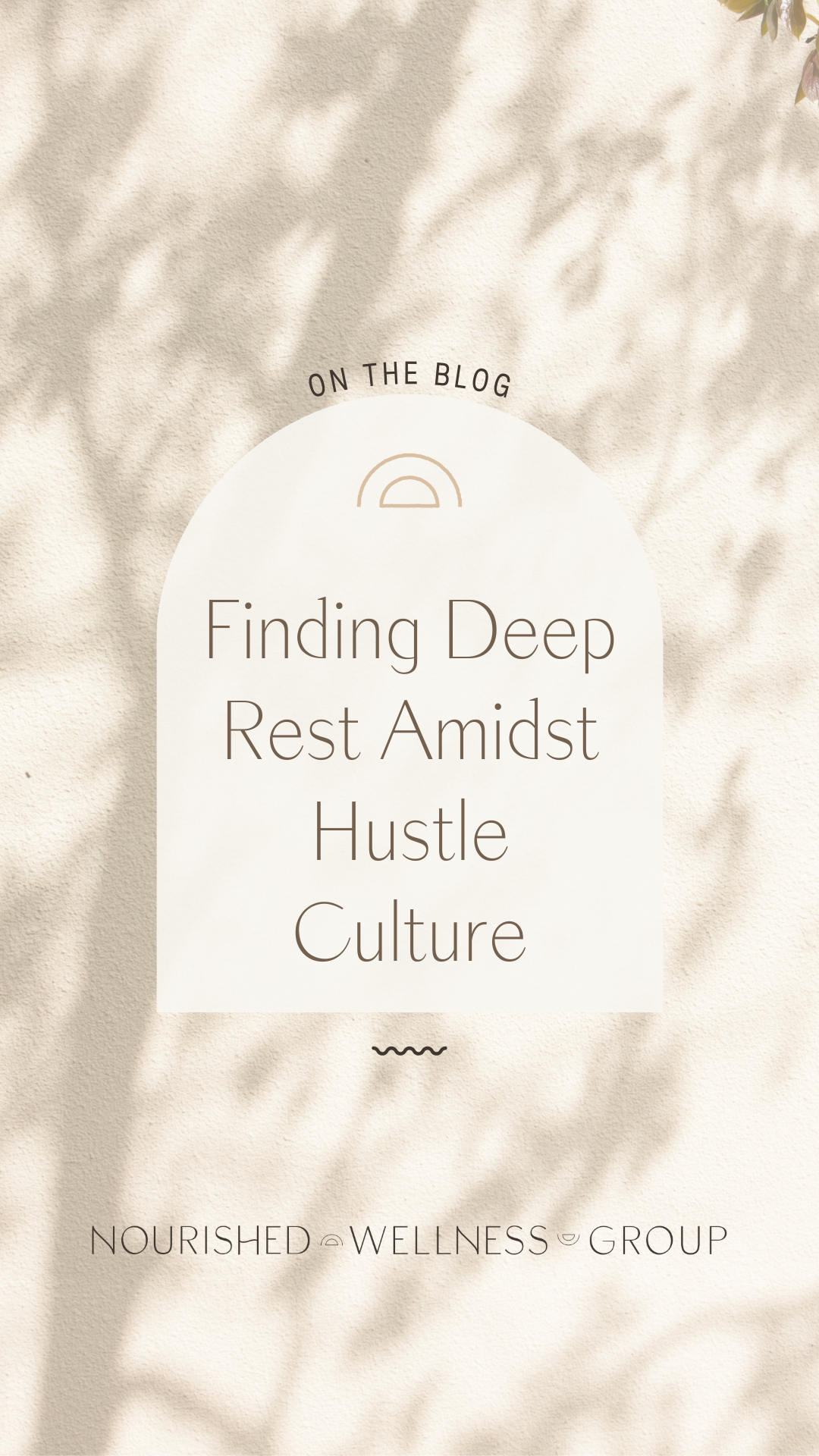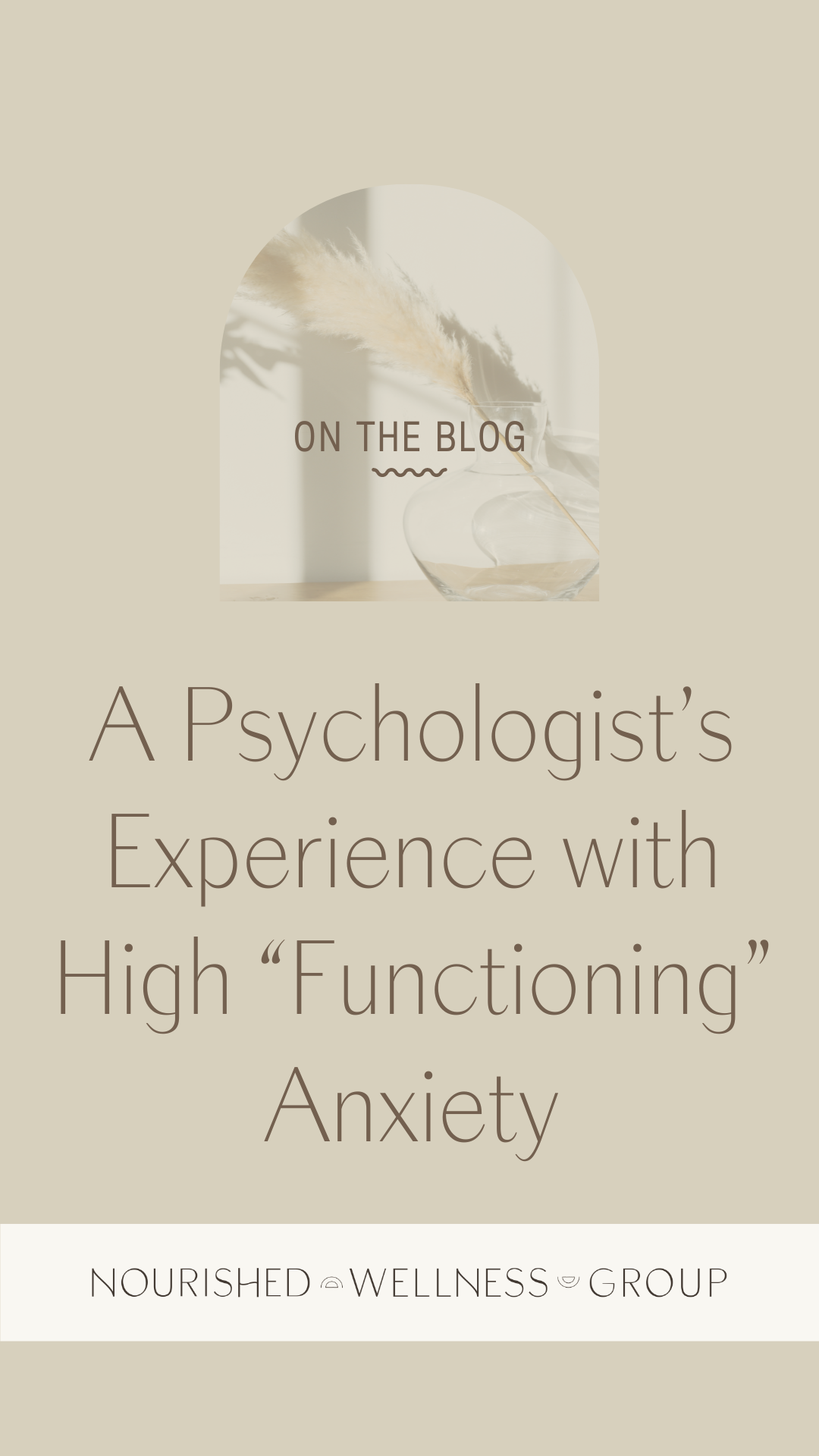The Biology of High “Functioning” Anxiety
Welcome in. Dr. Kelly Vincent here. How are you doing this week? How's your nervous system?
Yes, I did just casually drop in a question about your nervous system :) But it's on topic!
Today, we're going to explore the connection between two of my favorite topics - the nervous system & high "functioning" anxiety. Maybe it's just my personalized algorithm, but it seems like there's a lot of conversation about the nervous system bouncing around the internet (i.e Instagram). I love it.
Learning about the nervous system and its intricate connection with our mental health can be freeing. For me, it was such an 'aha' moment. If you're thinking, "huh??" it might be helpful to pause and check out this blog post.
If you're familiar with nervous system basics, you might wonder how it's connected to High "Functioning" Anxiety. One hypothesis is that your nervous system is “stuck on”.
Yup, you read that right. Let's break it down.
What does high “functioning” anxiety look and feel like?
Individuals with HFA might chronically hang out in the activated "fight-or-flight" state. You're not always here, but you're definitely a frequent flyer. So what does this look like in the mind & body?
Constantly doing, achieving, and producing until you're on the brink of burnout
Tightness in the chest, neck, and shoulders
You can't slow down/slowing down feels threatening
Emotional floods/outbursts
Headaches or migraines
Upset stomach, nausea, indigestion
An ever-present sense of urgency
If this list feels relatable, you're not alone. We exist in a society where productivity is our most outstanding achievement. Our sympathetic nervous system backs up our hustle. Stress hormones, like cortisol and adrenaline, provide us with the energy that we may need to get through our busy days.
The Impact on Your Nervous System
But what keeps us stuck in this state?
From a nervous system perspective, our fight-or-flight state is switched on when we perceive a threat. Historically, it might have been a giant tiger. More recently, a cascade of emails from your boss, a sick child, a traffic jam, an argument with your partner, etc may be the threat that your nervous system is responding to.
With High "Functioning" Anxiety, the "threat" might be fear of failure, embarrassment, or the feeling of not being enough. And again, if this is relatable, you are not alone.
While you might be able to pinpoint the origin of this thought process, usually our "threats" are established early in life. Based on our experiences during childhood, we learn and internalize what is "true" about our world. If you experience HFA, this belief might look like:
"I am never enough, UNLESS I achieve more, do more, produce more, please more, be more."
This belief can imprint on your nervous system creating habitual patterns of how you (and your nervous system) respond to your environment. So as we go about our lives, each time we encounter this "threat" (i.e the fear of not being enough), we're pushed into our activated fight-or-flight state. And when this comes up everyday (i.e fear of failure), we are living in a constantly mobilized state. Essentially, your system is keeping you "safe" from these big emotions AND belief systems.
This perspective allows me to hold my nervous system with a bit more compassion. It's doing it's very best to keep me safe based on what I've experienced. And just like our brain, our nervous system is always learning. We have the capacity to bring awareness to our engrained tendencies and gently shift them towards a more supportive state.
I know it was a lot of information, and it might have brought up some difficult emotions for you. If so, please take care of yourself.
Supportive Guided Practice
Before we close today, I invite you to take a moment for a quick grounding exercise. When was the last time that you hummed? Humming stimulates our vocal cords which indirectly stimulates our vagus nerve. TLDR: Humming is calming for our nervous system.
If you're open to it, you can take a few deep, long breaths. If you're sitting, start to feel your body in the chair. Lengthen your spine, if that feels comfortable. On your next exhale, try humming to yourself. It can be soft and barely audible, or loud. Notice how it feels in your body. Try to stay with it for a few rounds of breath. Repeat as long as it feels good :)
Take good care.
Dr. Kelly Vincent
About the author
Dr. Vincent is the founder of Nourished Wellness and a licensed clinical psychologist specializing in anxiety, trauma, depression and self-esteem. She often works with women, female entrepreneurs, mothers, and 20-somethings. Group. She is passionate about treating the WHOLE person & believes that mental and emotional struggles not only reside within the mind but also in the body.







